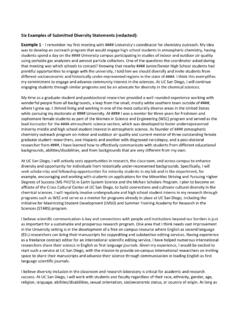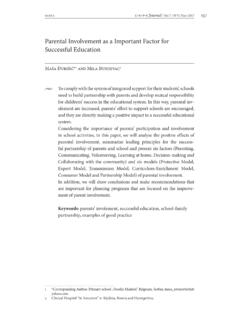Transcription of Software Design Document - Robotics
1 Example XML Legal Document Utility Software Design Document Version < >. Rex McElrath 2007-04-20. XML Legal Document Utility Version: < >. Software Design Document Date: 2007-04-20. SDD-XLDU. Revision History Date Version Description Author 04/18/07 < > Initial Version of Document Rex McElrath Page 2 of 48. XML Legal Document Utility Version: < >. Software Design Document Date: 2007-04-20. SDD-XLDU. Table of Contents 1 Definitions, Acronyms, and 2 3 Use List of Use Use Case Use 4 Design System System Constraints and 5 System Object Subsystem 6 Object 7 Object Object Collaboration 8 Data Entity Relationship 9 Dynamic Sequence State 10 Non-functional Performance Design 11 Supplementary Tools Used to Create Page 3 of 48.
2 XML Legal Document Utility Version: < >. Software Design Document Date: 2007-04-20. SDD-XLDU. Software Design Document 1 Introduction The Software Design Document is a Document to provide documentation which will be used to aid in Software development by providing the details for how the Software should be built. Within the Software Design Document are narrative and graphical documentation of the Software Design for the project including use case models, sequence diagrams, collaboration models, object behavior models, and other supporting requirement information. Purpose The purpose of the Software Design Document is to provide a description of the Design of a system fully enough to allow for Software development to proceed with an understanding of what is to be built and how it is expected to built.
3 The Software Design Document provides information necessary to provide description of the details for the Software and system to be built. Scope This Software Design Document is for a base level system which will work as a proof of concept for the use of building a system the provides a base level of functionality to show feasibility for large scale production use. This Software Design is focused on the base level system and critical parts of the system. For this particular Software Design Document , the focus is placed on generation of the documents and modification of the documents. The system will be used in conjunction with other pre-existing systems and will consist largely of a Document interaction facade that abstracts Document interactions and handling of the Document objects.
4 Page 4 of 48. XML Legal Document Utility Version: < >. Software Design Document Date: 2007-04-20. SDD-XLDU. Definitions, Acronyms, and Abbreviations Data Objects Data objects are Java objects with predefined structures capable of holding data in a structure that is quickly and easily accessible by other parts of the Software system. They provide also can help provide a convenient abstraction of the data in a database so that it can be retrieved into a format, such as a denormalized format, that makes access and manipulation of the data easier than if the database had to be called directly. Denormalized - Normalization of a database is the activity of restructuring the database to avoid data anomalies and inconsistencies by focusing on functional dependencies to help structure the data.
5 A web address to reference about normalization is: . Denormalization is the act of undoing some of the structural changes made during normalization to help with performance. Digital Signature A digital signature is a unique object which is strongly tied to a single entity and the Document which signature is intended for. In the same way that a ink on paper signature has characteristics that are unique to a person due to variations in writing a digital signature has characteristics that uniquely tie it to a single person and signing instance. Document Interaction Class, XMLD ocumentInteractionEngine These are the two terms that will be used to refer to the main Software class described within this Document .
6 Editable Form Layout- A user interface presentation layout in which the contents of a Document are presented to a user in the format of a form predefined editable areas based on the type of Document which is being edited. This type of layout allows for changes to be made in a specific manner so that the data used in the form can be reassembled into a structured data format for transfer to other systems and archival. FOP Libraries FOP stands for Formatting Objects Processor. The FOP Processor use an XSL-FO stylesheet and an XML instance to create PDF's, RTF's, and HTML files. FOP. libraries bring the functionality of an FOP processor to a library form which can be used within another Software program.
7 JDBC/ODBC These two acronyms stand for Java Database Connectivity and Open Database Connectivity API's which allow for standardized database access and interaction from Software products. JDBC: . ODBC: LegalXML A standards body dedicated to issues related to the use of XML in the legal domain, PDF Portable Document Format, Pro se This is a Latin term which directly translated means for self and is used to indicate that a party to a case has chosen to represent them selves to the court instead of choosing for an attorney to represent them to the court. Required Field A critical field is a field in a data set for a Document that is required for successful Document generation.
8 For example, missing parties in a case, missing county location of court, or other data elements that are required to create a valid legal Document . Page 5 of 48. XML Legal Document Utility Version: < >. Software Design Document Date: 2007-04-20. SDD-XLDU. Structured Data Format A structured data format is data assembled into a discernible structure, such as when data is placed into an XML instance which is validated through the use of an XML schema which defines the structure of the XML Document . UUID Universally Unique Identifier. A UUID is an identifier standard in Software construction which allows for generating identifiers which do not overlap or conflict with other identifiers which were previously created even without knowledge of the other identifiers.
9 Workflow The movement of documents through a work process that is structured into tasks with designated persons or systems to perform them and the definition of the order or pathway from start to finish for the work process. XML eXtensible Markup Language, XSL XML Stylesheet Language, which is used to transform and specify formatting for presentations of XML instances. XSL is a family of specifications that include XSLT, XSL- FO, and XPath. XSLT stands for XSL Transform, which is used to transform an XML. instance from one form to another. XSL-FO stands for XSL Formatting Objects, which is a specification for formatting objects which format the output of presentations of XML.
10 Instances in forms such as RTF type files, PDF type files, or HTML files. XPath stands for XML Path Language and is a specification for accessing parts of an XML Document using the path to the part in the hierarchy of the XML instance. Page 6 of 48. XML Legal Document Utility Version: < >. Software Design Document Date: 2007-04-20. SDD-XLDU. References XML Legal Documents Utility Software Development Plan Version , Last Updated on 2007-01-31. Overview The Software Design Document is divided into 11 sections with various subsections. The sections of the Software Design Document are: 1 Introduction 2 Glossary 3 Use Cases 4 Design Overview 5 System Object Model 6 Object Descriptions 7 Object Collaborations 8 Data Design 9 Dynamic Model 10 Non-functional Requirements 11 Supplementary Documentation Page 7 of 48.




